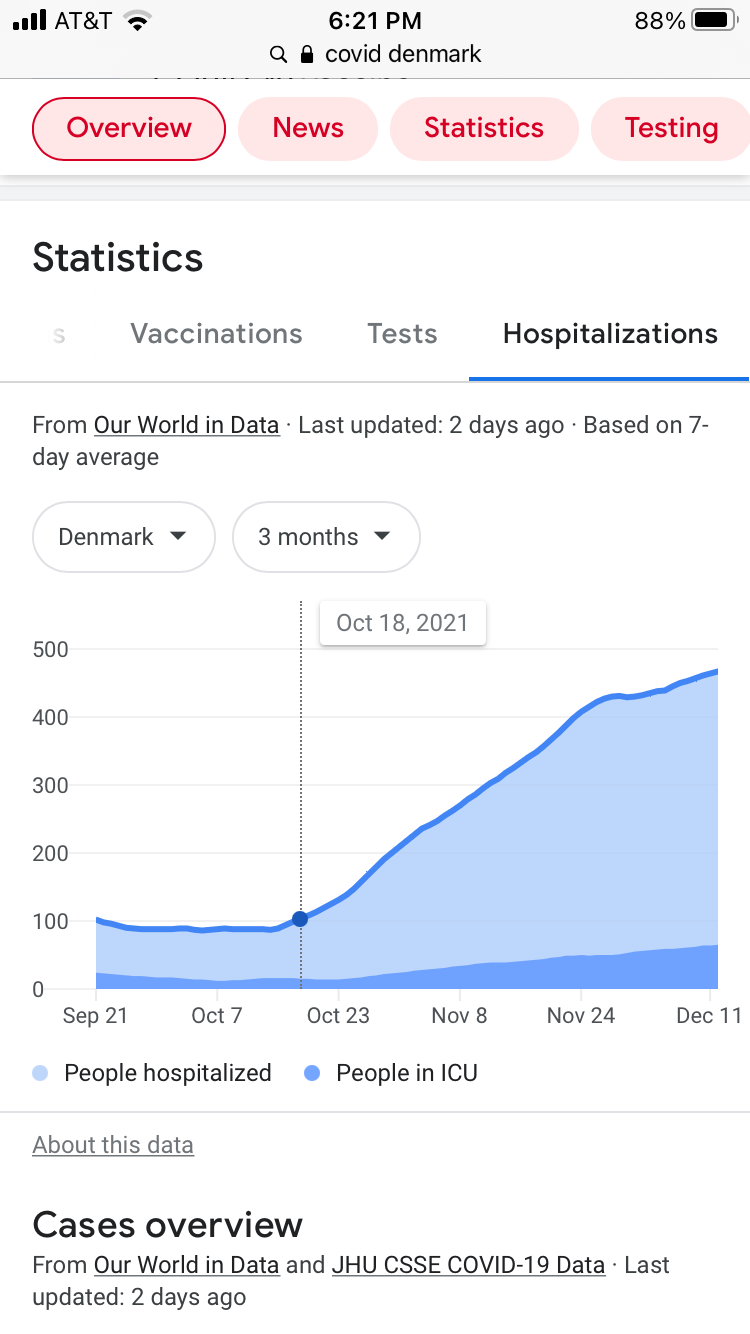Stunning Covid data from Denmark. Omicron has Been Used as Cover for Vaccine Failure
But not for the reason you've been told; the story is vaccine failure, not Omicron

The Danes are now publishing extremely detailed daily data about Covid cases and hospitalizations – not just about Omicron, but all Covid variants.
And, in news that will surprise precisely no one who has been alive the last two years, they paint a picture entirely different than what the media claims.
Omicron – which continues to appear significantly less dangerous though more transmissible than earlier variants of Covid – has been used as a cover for vaccine failure.
Most new Covid cases in Denmark occur in people who are vaccinated or boosted – and that is true for both Omicron and earlier variants. More than 76 percent of non-Omicron Covid infections in Denmark are in vaccinated people, along with about 90 percent of Omicron infections.
Further, only 25 of the 561 people currently hospitalized in Denmark for Covid have the Omicron variant. The Danes do not provide an exact number for patients in intensive care with Omicron, saying only that it is fewer than five.
Perhaps the most stunning fact about Omicron and Denmark is that its rise actually parallels a marked slowdown in the growth of Danish hospitalizations and intensive care patients. Those rose roughly fivefold between mid-October and late November, as the Danes left the happy vaccine valley. Since then they have barely budged, rising about 20 percent.
Danish Covid hospitalizations over the last three months: note that the rise predates Omicron.

The Danish data also show that people with Omicron are both less likely to be hospitalized than those with other variants and released from the hospital much more quickly – in line with what South African health authorities have reported.
On Friday, for example, the Danes reported that the total number of hospital patients with Omicron since the epidemic began reached 77, up by 20 patients from Thursday.
But the number of Omicron patients currently hospitalized rose only by eight between Thursday and Friday, from 17 to 25. Thus 12 out of the 17 Omicron patients on Thursday appear to have been released overnight.
Compared to Monday’s report, the trend is even more clear. The number of Omicron cases has roughly tripled, but the number of people hospitalized has barely budged, from 14 to 25.
SOURCE: https://www.ssi.dk/-/media/cdn/files/covid19/omikron/statusrapport/rapport-omikronvarianten-17122021-ep96.pdf?la=da
https://www.ssi.dk/-/media/cdn/files/covid19/omikron/statusrapport/rapport-omikronvarianten-16122021-fk3t.pdf?la=da
About the only reason for concern in any of the Danish data is that Omicron still appears to be preferentially infecting younger people – though not people under 15, who are more likely to be unvaccinated.
Overall, though, the figures out of Denmark largely back those from South Africa – and make clear that the reason that Europe has seen a massive rise in cases and hospitalizations this fall has nothing to do with Omicron and everything to do with vaccine failure.

